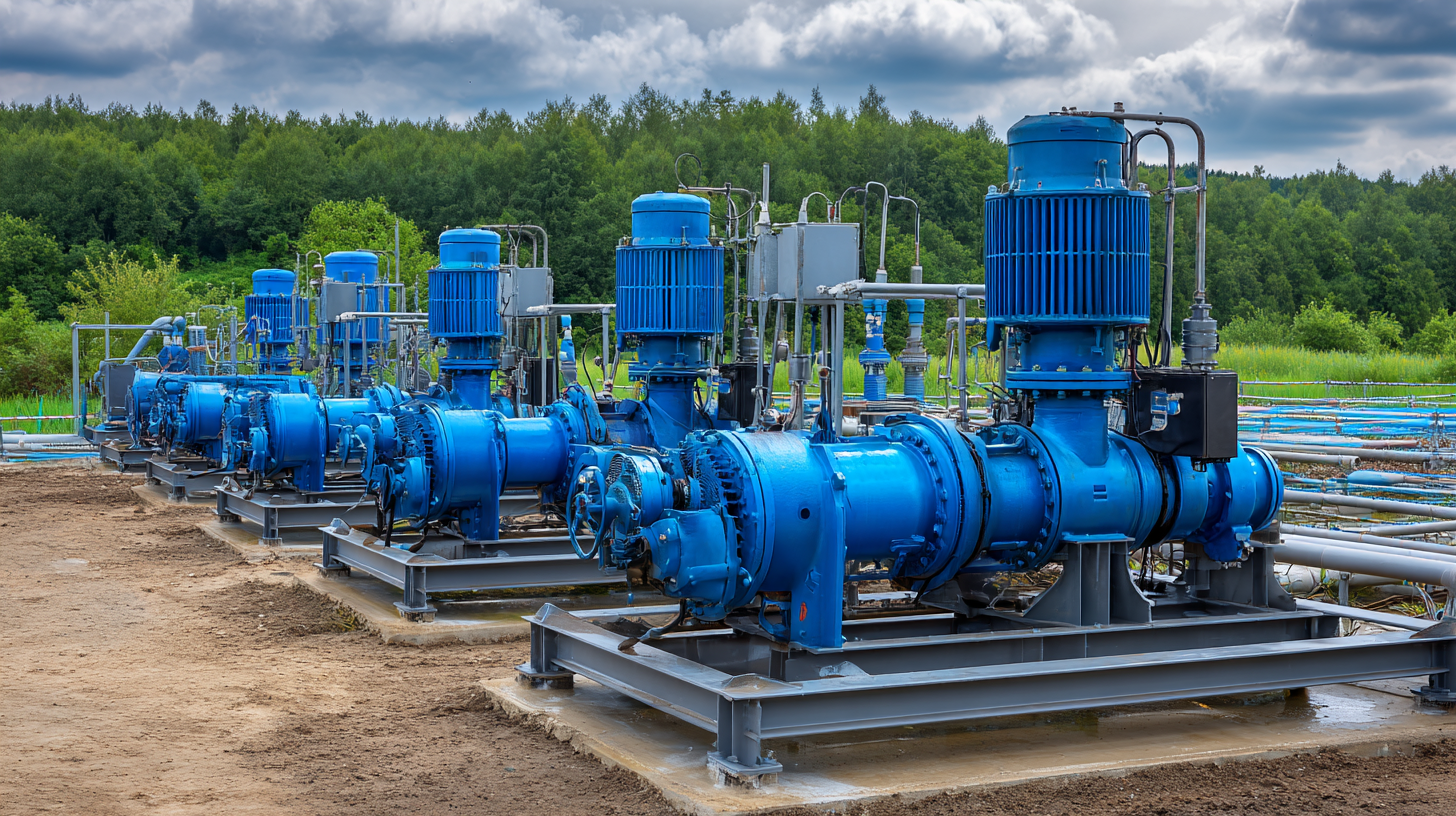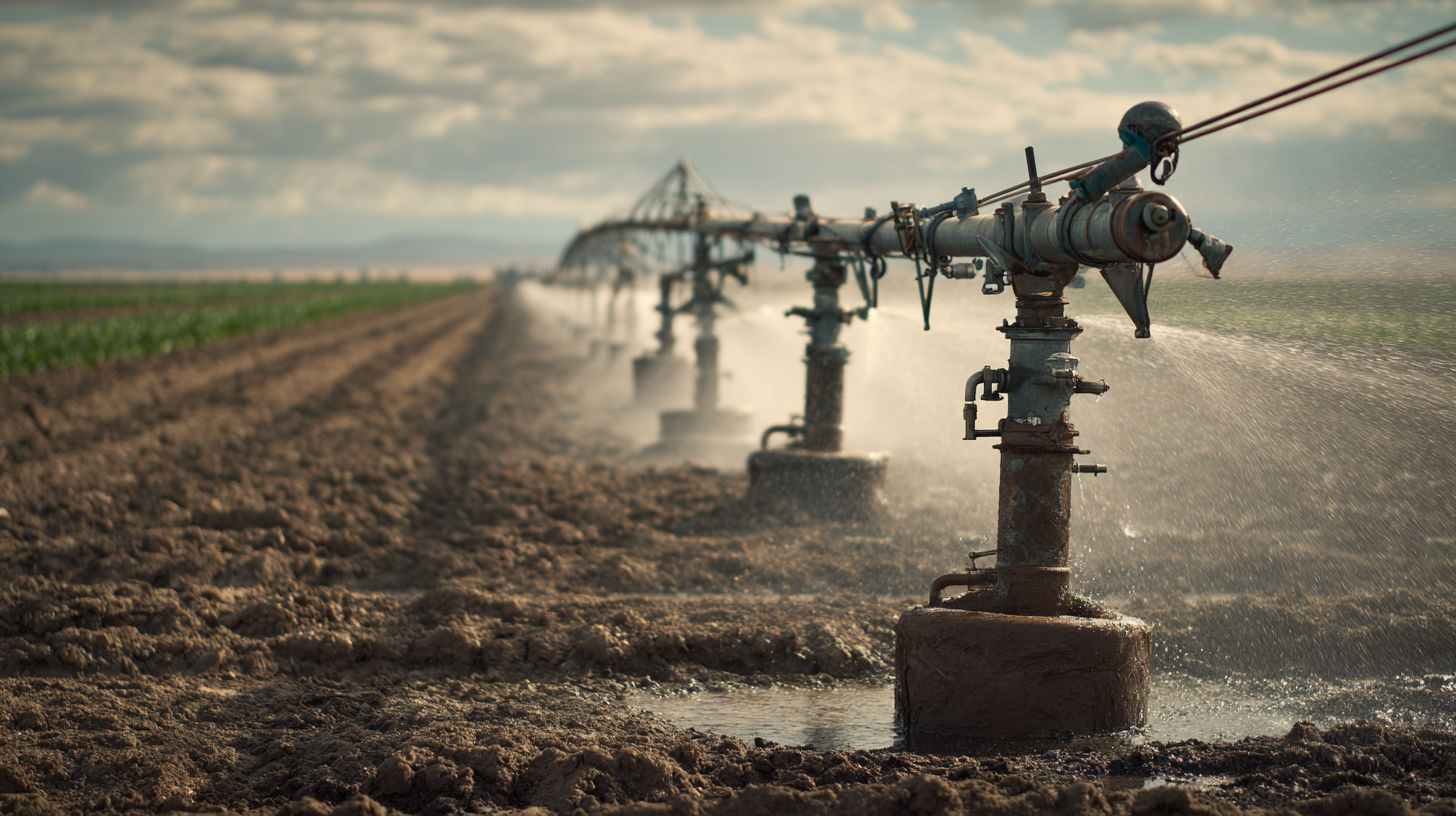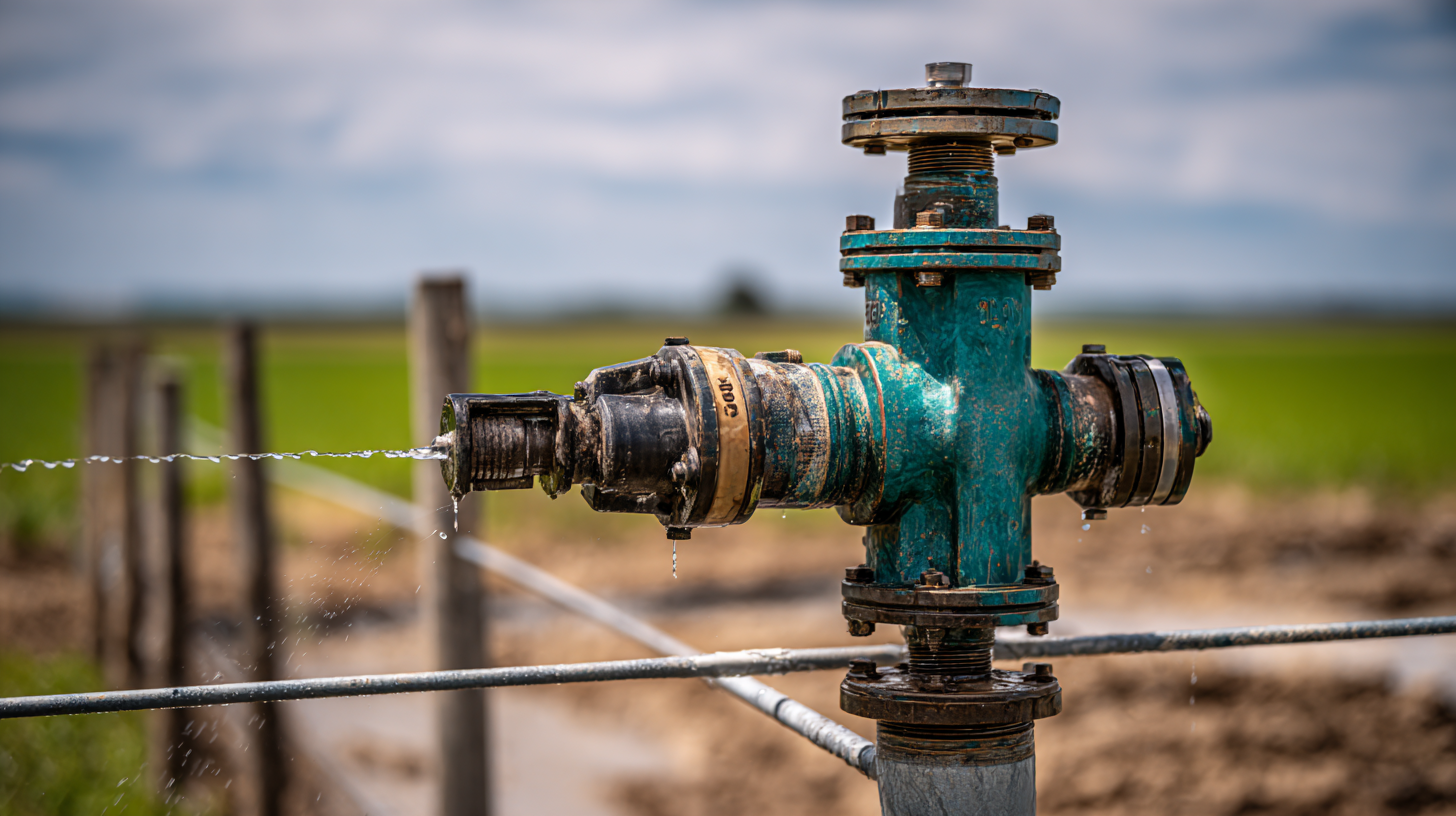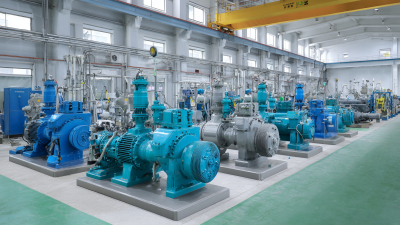
Universal Pumping | High Pressure Pumps
High Pressure Pumps for Difficult to Pump Slurry, Sludge, and Food Waste.
In the ever-evolving landscape of modern agriculture, the efficiency of irrigation systems plays a crucial role in maximizing crop yields and resource management. Central to this innovation is the feed pump, a device that significantly enhances water distribution and pressure regulation in agricultural settings. According to the USDA's latest agricultural resource management report, effective irrigation systems can increase crop productivity by up to 50%, underscoring the necessity for reliable components like feed pumps. Recent studies have demonstrated that adopting advanced feed pump technologies not only optimizes water usage but also reduces operational costs by approximately 20%. As farmers face the dual challenges of climate variability and growing food demand, understanding the mechanics of feed pumps becomes essential for harnessing their full potential in revolutionizing agricultural practices.

In recent years, the role of feed pumps in sustainable agriculture has gained significant attention, especially as the industry seeks to optimize water use amidst increasing environmental concerns. According to a report by the Food and Agriculture Organization (FAO), approximately 70% of the freshwater resources globally are utilized for agriculture. Efficient irrigation systems powered by advanced feed pumps can drastically reduce water consumption, with studies indicating that precision irrigation methods can save up to 50% more water than traditional approaches. This presents a crucial opportunity for farmers to contribute to water conservation while enhancing crop yield.

Moreover, feed pumps are essential in integrating renewable energy sources into agricultural operations. Research from the International Energy Agency (IEA) highlights that solar-powered pumping systems can lower irrigation costs by up to 40%, thus making sustainable practices economically viable for smallholder farmers. By incorporating these innovative technologies, agricultural operations not only minimize their carbon footprint but also improve their resilience against climate change.
The adoption of feed pumps in sustainable agriculture represents a pivotal shift towards more environmentally responsible farming practices, ensuring food security while protecting vital water resources.
Feed pumps play a crucial role in modern agricultural irrigation systems, enabling efficient water delivery to crops. These pumps come in various types, each designed to meet specific irrigation needs. Common types include centrifugal pumps, positive displacement pumps, and submersible pumps. Centrifugal pumps are popular for their efficiency and ability to handle large volumes of water, making them ideal for high-capacity irrigation systems. Positive displacement pumps, on the other hand, are renowned for their ability to move fluid at a constant flow rate, regardless of pressure changes, which is beneficial for precision irrigation techniques.
When choosing a feed pump, consider the specific requirements of your irrigation system. Ensure that the pump's flow rate and pressure capabilities align with your crop needs. Regular maintenance is also key to prolonging the lifespan of your pump. **Tip:** Monitor the pump for any unusual noises or vibrations, as these can indicate a problem that may affect performance. Additionally, using a filter can help prevent debris from clogging the pump, ensuring it operates smoothly.
Another factor to consider is the source of water. Submersible pumps are advantageous when dealing with deep wells, as they are designed to operate underwater, efficiently drawing water without needing extensive surface infrastructure. **Tip:** Always evaluate the energy efficiency of your pump to reduce operational costs. Investing in a high-efficiency model may have upfront costs but can lead to significant savings in the long run.
Modern feed pumps are revolutionizing agricultural irrigation systems by incorporating advanced technologies and features designed to improve efficiency and sustainability. One key innovation is variable frequency drives (VFDs), which allow pumps to adjust their speed in real-time based on irrigation demands. This adaptability not only conserves energy by minimizing pump wear but also ensures that water is distributed evenly across various crop zones, optimizing growth potential.
Another significant feature is the integration of smart sensors equipped with IoT capabilities. These sensors monitor soil moisture levels and environmental conditions, enabling farmers to automate their irrigation systems for maximum effectiveness. This not only helps in conserving water but also minimizes labor costs and the risk of over- or under-watering crops.
**Tips:** When selecting a feed pump, consider the specific crop requirements and the local climate conditions. Regular maintenance of the pump and sensors can significantly extend their lifecycle and maintain efficiency. Investing in training for staff on the latest technology in feed pumps can also improve overall system performance.
| Feature | Description | Technologies Used | Benefits |
|---|---|---|---|
| Variable Speed Control | Allows pump operation at different speeds. | VFD (Variable Frequency Drive) | Increased efficiency and reduced energy consumption. |
| Self-Priming Capability | Capability to draw fluid without external assistance. | Advanced impeller design | Convenience and reduces installation costs. |
| Smart Automation | Integration with IoT for monitoring and control. | Sensors and Cloud Computing | Remote monitoring and improved responsiveness. |
| Energy Efficiency | Design optimized for minimal energy use. | High-efficiency motors | Reduction in operational costs. |
| Durability | Robust design for long-term use in harsh conditions. | Corrosion-resistant materials | Lower maintenance costs and longer lifespan. |
 Efficient feed pump systems play a critical role in modern agricultural irrigation, delivering significant economic benefits to farmers. By ensuring a consistent and controlled water supply, these systems minimize water waste and optimize usage. This capability not only leads to lower operating costs but also enhances crop yields, allowing farmers to achieve better productivity at reduced rates. Consequently, better irrigation practices foster an environment where farmers can invest more in sustainable practices and adopt advanced agricultural technologies.
Efficient feed pump systems play a critical role in modern agricultural irrigation, delivering significant economic benefits to farmers. By ensuring a consistent and controlled water supply, these systems minimize water waste and optimize usage. This capability not only leads to lower operating costs but also enhances crop yields, allowing farmers to achieve better productivity at reduced rates. Consequently, better irrigation practices foster an environment where farmers can invest more in sustainable practices and adopt advanced agricultural technologies.
Furthermore, the economic impacts extend beyond individual farms. When feed pump systems are optimized, the overall efficiency of agricultural operations improves, leading to increased food production and stability in market prices. This efficiency can drive down the costs of food for consumers while increasing the profitability of farming as a business.
Additionally, adopting advanced feed pump technology can attract investment in rural areas, leading to job creation and contributing to the broader economy. As farmers embrace these innovations, the ripple effects can enhance the entire agricultural sector, demonstrating that efficient irrigation solutions are crucial for both economic sustainability and food security.
Feed pumps are at the forefront of agricultural innovation, significantly enhancing modern irrigation systems. As the industry looks to the future, advancements in feed pump technology promise to revolutionize efficiency and sustainability. With innovations such as smart sensors and automated control systems, farmers can optimize water usage, ensuring crops receive adequate moisture while minimizing waste. These pumps not only improve productivity but also contribute to environmental conservation by reducing the energy footprint and water consumption of irrigation practices.
Emerging technologies in feed pumps are set to lead the charge toward greater automation and integration within agricultural processes. For instance, the application of real-time monitoring systems can provide crucial data for decision-making, allowing for timely adjustments based on local weather conditions or soil moisture levels. As research and development continue, we can expect an even more sophisticated approach to irrigation with feed pumps, paving the way for sustainable farming practices that meet the demands of a growing population while preserving precious resources.






Universal Pumping
625 Apache Trail
Woodstock, GA 30189
Mon - Fri | 9:00 AM - 5:00 PM
Universal Pumping is staffed with industry professionals with 20-45 years experience with high pressure pumping systems. We represent only the “elite producers” in pump manufacturing: Britain’s EMS and Germany’s EMMERICH. Our engineering and manufacturing approach is conservative, and we do not use “guess work” in the design or sales of our pumping and filtration equipment.



